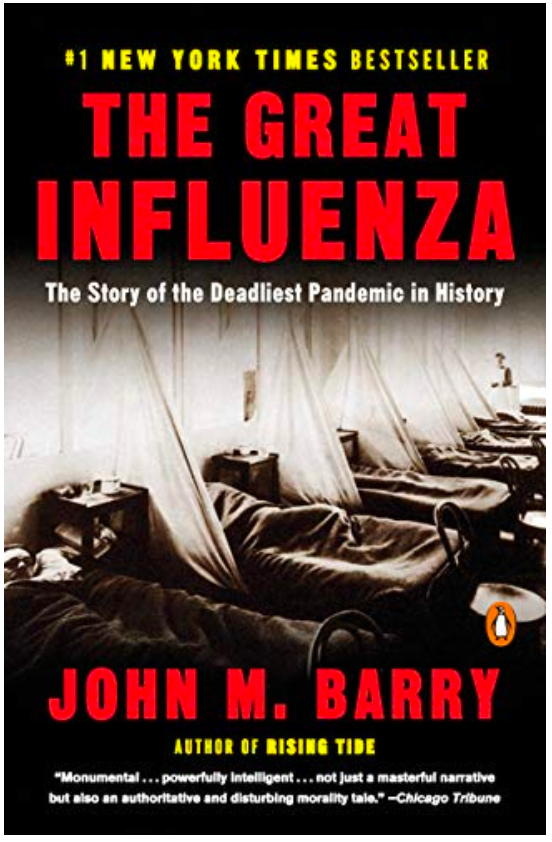
Book Reviewed:The Great Influenza: The story of the Deadliest Pandemic in History
Author: John M. Barry
Publisher: Penguin Books
Copyright Date: October 4, 2005
ASIN: B000OCXFWE
Type: eBook
Reviewed by:Don Yackel (Yackman)
Rating: (7 out of 10)
My Review: Sometimes I thought this 450 page book (plus 100 pages of acknowledgments and footnotes) would never end. The prologue pulled me in, then I was subjected to chapter after chapter of the whole history of the development of medical science from way before Hippocrates. This material was interesting enough, just too long with more detail than I needed to understand the pandemic.
For me, the most illuminating part of this section was the explanation of how a bacteria (its structure is coded in DNA) and a virus (its structure is coded in RNA) are genetically different, making bacteria more stable. less likely to mutate, while viruses mutate easily causing the many changes and variations we see in illnesses such as influenza. This is why we are always dealing with a new flu each year.
Then I got to a section that described the pandemic itself; what it was like, how it spread, what was being done to contain it, and how it was being treated. At this point the book became a page turner and remained so for much of the second third of the book. It was impossible not to see the parallels between then and now as we fight the COVID-19 virus. The 1918 flue was more deadly, killing mostly younger people with little warning, in one to four days after onset. But the slow reactions of public health officials, the down playing of the seriousness of the disease, and the widespread ignoring of medical advice by political leaders and others in charge, had me shaking my head thinking that we really hadn’t learned much from these earlier pandemics. (There have been five pandemics from the late 1800’s till now. George Bush and Barak Obama both had to deal with much smaller pandemics during their presidencies.)
The story of the pandemic never really concluded. It just sort of petered out (the pandemic lasted 2.5 years). At this point the final third of the book morphed into a long story of how various scientists worked to identify the organism that caused the flu. This section covered decades of research which again was much more information than I needed or wanted. At this point, I thought the book would never end. I breathed a sigh of relief when I reached the last page, 461.
Parts of this book are really interesting and engaging. If you are a speed reader (I am not) and can skim over much of the first third of the book till you reach the descriptions of the pandemic itself, you will probably enjoy the book more than I did. Then I’d just skip the last third (if you can find which chapter starts that third. It isn’t crystal clear.). There are probably other books out there that focus more closely on the 1918 Pandemic only. If that’s your interest, it might be a better choice.